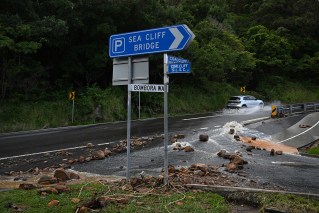Remnants of China’s biggest rocket, at one point on a trajectory to crash back to earth near the North Island of New Zealand, have landed in the Indian ocean near the Maldives.
With no reports of damage yet, it looks to be the best-case scenario for the final moments of the Long March 5B rocket, but that has not stopped NASA and other astrophysicists blasting China for irresponsibility.
Damage from previous deployment
The rocket blasted off from China’s Hainan island on April 29.
It was the second deployment of the 5B variant since its maiden flight in May 2020.
Last year, pieces from the first Long March 5B fell on the Ivory Coast, damaging several buildings. No injuries were reported.

The Long March 5B rocket was launched on April 29. Photo: AAP
The China Manned Space Engineering Office says most of the latest rocket burnt up in the atmosphere, and the remaining debris landed at a location with the coordinates of longitude 72.47 degrees east and latitude 2.65 degrees north. That is in the Indian Ocean somewhere southwest of India and Sri Lanka.
Harvard-based astrophysicist Jonathan McDowell told Reuters that the potential debris zone could have been as far north as New York, Madrid or Beijing, and as far south as southern Chile and Wellington, New Zealand.
‘Lazy’ rocket designers
Ever since large chunks of the NASA space station Skylab fell from orbit in July 1979 and landed in Australia, most countries have sought to avoid such uncontrolled re-entries through their spacecraft design, McDowell said.
“It makes the Chinese rocket designers look lazy that they didn’t address this,” said Dr McDowell, a member of the Harvard-Smithsonian Centre for Astrophysics.
Dismissed as ‘Western hype’, and more rockets to come
The Global Times, a Chinese tabloid published by the official People’s Daily, dismissed as “Western hype” concerns that the rocket was “out of control” and could cause damage.
“It is common practice across the world for upper stages of rockets to burn up while reentering the atmosphere,” said Wang Wenbin, a spokesman at the Chinese foreign ministry, at a regular media briefing on May 7.
The rocket, which put into orbit an unmanned Tianhe module containing what will become living quarters for three crew on a permanent Chinese space station, is set to be followed by 10 more missions to complete the station by 2022.
-with AAP









